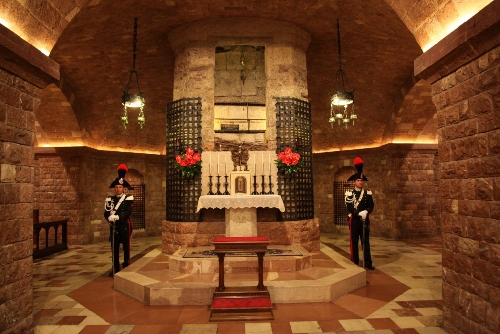Crypt in the Basilica of San Francis in Assisi
After the death of Francis, his body was placed in the Church of St. George (which later became the Basilica of St. Claire). The construction of the new basilica for San Francis was directed by Brother Elías, and was intended to build a religious site worthy of the most popular saint of the time, at that time many pilgrims already went to Assisi to know the origins of Francis.
At first the site had been called the "Hill of Hell" because criminals used to be executed there, but soon after it was already known as the "Hill of Paradise" after the church was completed and the remains of Francis were placed inside.
Today the church is composed of three levels. The lower basilica was completed before the first two years of construction in a Romanesque architectural style, and Francisc' body was buried deep beneath the main altar. It was designed to be a burial place resembling a grave.
The rest of the upper church was completed in Gothic style in 1253. The ceilings were taller and its nave brighter, to symbolize the Resurrection. The best artists of the time, Giotto, Cimabue, Martini and Lorenzetti, were called to beautify both levels.



Comments
Post a Comment